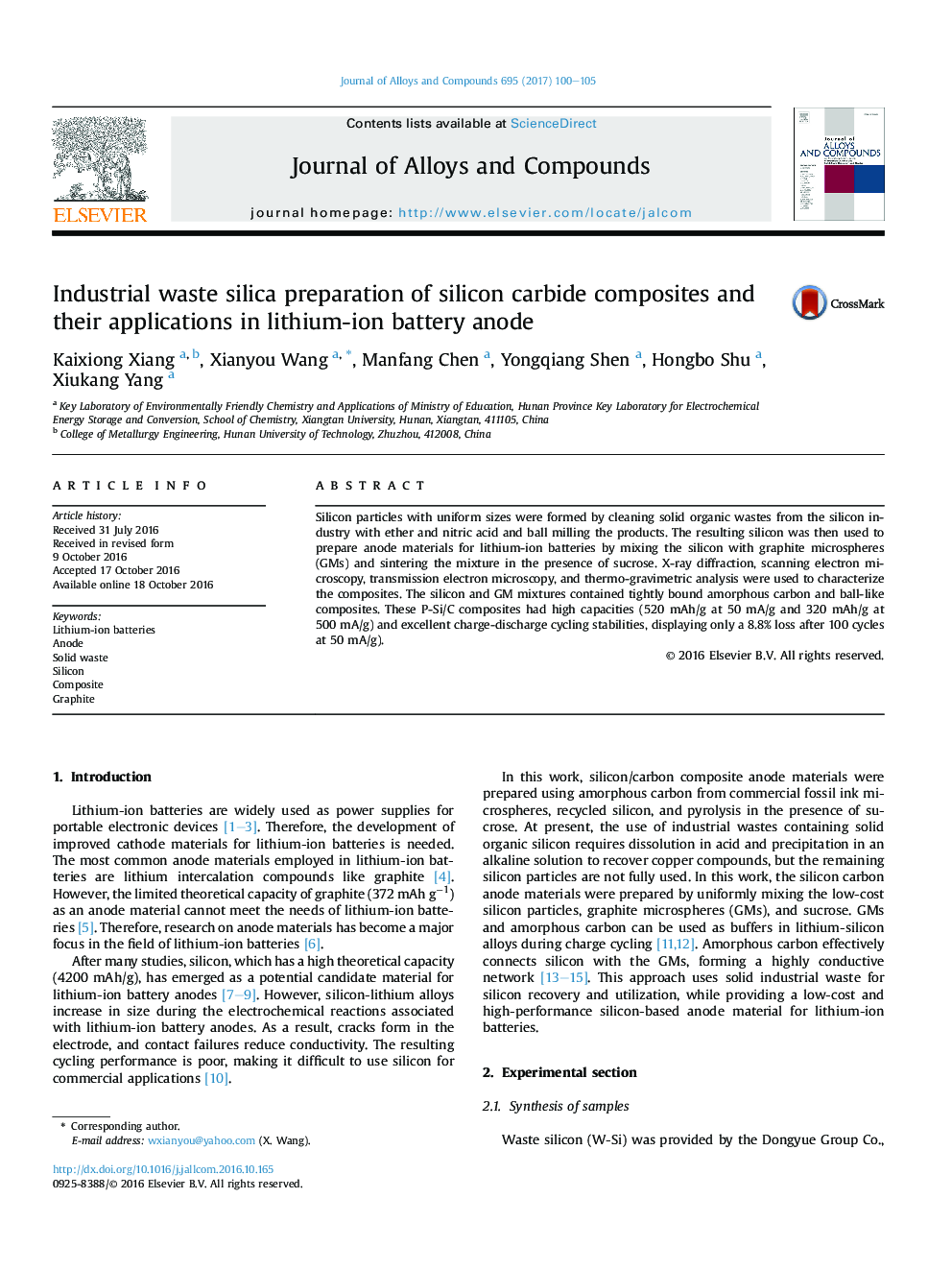| Article ID | Journal | Published Year | Pages | File Type |
|---|---|---|---|---|
| 5461377 | Journal of Alloys and Compounds | 2017 | 6 Pages |
Abstract
Silicon particles with uniform sizes were formed by cleaning solid organic wastes from the silicon industry with ether and nitric acid and ball milling the products. The resulting silicon was then used to prepare anode materials for lithium-ion batteries by mixing the silicon with graphite microspheres (GMs) and sintering the mixture in the presence of sucrose. X-ray diffraction, scanning electron microscopy, transmission electron microscopy, and thermo-gravimetric analysis were used to characterize the composites. The silicon and GM mixtures contained tightly bound amorphous carbon and ball-like composites. These P-Si/C composites had high capacities (520Â mAh/g at 50Â mA/g and 320Â mAh/g at 500Â mA/g) and excellent charge-discharge cycling stabilities, displaying only a 8.8% loss after 100 cycles at 50Â mA/g).
Related Topics
Physical Sciences and Engineering
Materials Science
Metals and Alloys
Authors
Kaixiong Xiang, Xianyou Wang, Manfang Chen, Yongqiang Shen, Hongbo Shu, Xiukang Yang,
